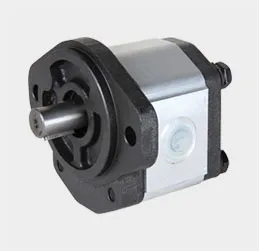high pressure casting
High Pressure Casting Revolutionizing Metalworking
High pressure casting, also known as die casting, is an advanced manufacturing process that has gained significant attention in the metalworking industry due to its ability to produce complex shapes with high precision and efficiency. This process typically involves forcing molten metal into a steel mold under high pressure, resulting in products with excellent dimensional accuracy and superior surface finish.
The Process
The high pressure casting process begins with the preparation of the molten metal, which is usually made from aluminum, zinc, magnesium, or other non-ferrous alloys. The metal is melted in a furnace and then transported to a die casting machine. This machine consists of two halves of a mold, which are clamped together as the molten metal is injected at high speed and pressure, typically ranging from 1,000 to 30,000 psi.
Once the metal fills the cavity of the mold, it cools and solidifies rapidly. The die is then opened, and the finished part is ejected. This cycle can be completed in seconds, allowing for high production rates and reduced lead times. Furthermore, the efficiency of high pressure casting contributes to lower material waste compared to traditional methods.
Advantages of High Pressure Casting
1. Precision and Consistency One of the most significant advantages of high pressure casting is the remarkable precision it offers. The molds are engineered to tight tolerances, resulting in finished products that require little or no machining. This consistency is crucial in industries where precision is paramount, such as automotive and aerospace manufacturing.
2. Complex Geometries High pressure casting technology allows for the production of complex shapes and intricate designs that would be difficult or impossible to achieve with other manufacturing methods. This capability enables designers to create lightweight and efficient components without sacrificing strength.
3. Surface Finish The use of high pressure helps achieve a smooth surface finish, which often eliminates the need for additional surface treatments. This not only saves time and cost but also enhances the aesthetic appeal of the final product.
4. Material Efficiency The process of high pressure casting generally leads to minimal waste of metal. With the ability to recycle and reuse materials, manufacturers can achieve a sustainable production cycle, which is increasingly important in today’s environmentally conscious market.
high pressure casting

5. High Production Rates High pressure casting can produce large quantities of parts quickly, making it an ideal solution for mass production. The quick cycle time significantly reduces labor and operational costs.
Applications
High pressure casting is widely used in various industries. The automotive sector relies heavily on this process for manufacturing engine components, transmission parts, and structural elements. In the aerospace industry, high pressure casting is utilized for producing lightweight and durable parts that contribute to fuel efficiency and performance.
Consumer electronics also benefit from high pressure casting, where intricate housings and components are produced to meet the demands for modern devices. Additionally, industries such as construction, telecommunications, and robotics leverage this technology to create strong and reliable parts.
Challenges and Future Developments
Despite its many advantages, high pressure casting is not without challenges. The initial cost of building molds can be high, which may deter smaller manufacturers from adopting this technology. Additionally, the process requires careful control of temperatures and pressures to avoid defects such as porosity or dimensional inaccuracies.
Looking to the future, advancements in materials engineering and automation are set to enhance high pressure casting. The integration of artificial intelligence and machine learning in process control can lead to smarter manufacturing systems, further improving efficiency and product quality. Additionally, the development of biodegradable alloys could pave the way for more environmentally friendly casting practices.
Conclusion
High pressure casting represents a remarkable innovation in the field of metalworking, providing manufacturers with a powerful tool for producing high-quality components with speed and precision. Its advantages of efficiency, material utilization, and complex shape capabilities make it an invaluable process in various industries. As technology continues to evolve, high pressure casting is poised to play an even more significant role in the future of manufacturing, proving that it is not just a method, but a cornerstone of modern production techniques.
-
Precision Casting AI Solution with GPT-4-Turbo | Optimized QualityNewsAug.02,2025
-
Precision Sheet Metal Stamping Manufacturer | Fast & ReliableNewsAug.01,2025
-
OEM Sand Cast Pump Valve Fittings - Baoding Hairun Machinery And Equipment Trading Co., Ltd.NewsAug.01,2025
-
Custom OEM Impellers | High Efficiency & PrecisionNewsAug.01,2025
-
OEM Sand Cast Pump Valve Fittings - Baoding Hairun Machinery | Customization, Quality AssuranceNewsAug.01,2025
-
OEM Sand Cast Pump Valve Fittings - Baoding Hairun Machinery And Equipment Trading Co., Ltd.NewsAug.01,2025















